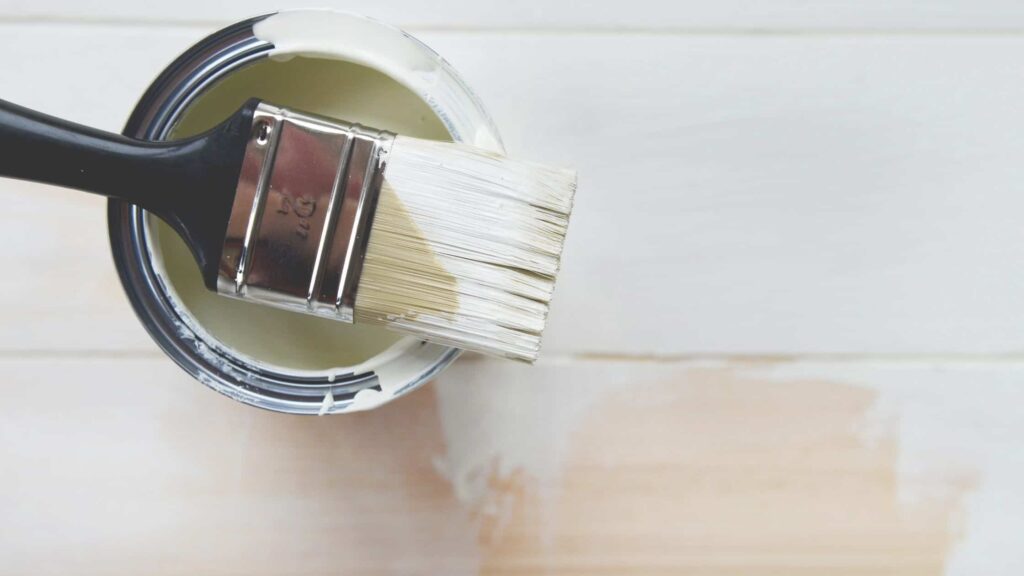Painters are subjected to a great deal of complicated chemical compounds and mixtures that usually generate poisonous fumes, which are known to cause carcinogenic complications.
According to certain research published in the Journal of Occupational & Environmental Medicine, painters are significantly exposed to greater risks of contracting various types of diseases, including cancer of the lungs, kidney, and bladder.
Most paints that are used for decorating homes contain dangerous chemical substances, such as VOCs (Volatile-Organic-Compounds) and harmful solvents. When the paint dries up, the chemical compounds are converted into gases, which are then released into the atmosphere.
When the painter and people nearby inhale the paint fumes, they’re more likely to suffer from nose, throat, and eye irritation. In great amounts, studies have clearly shown that these chemical substances can cause cancers, birth complications, and damage to the brain.
Paints and VOCs
Paints can be classified into 2 categories: oil-based and water-based. The former is used particularly for a glossy finish. A certain liquid (solvent) is added to such paints in order to thin them, making the mixture spread well. The latter kinds of paints are usually acrylic emulsions and are used when painting walls.
Generally, paints and thinners contain VOCs, the chemical compounds that are easily converted into gases or vapors. VOCs are also found in most consumer products such as cigarettes, dry cleaning products, cleansers, building furnishes, adhesives, and more.
Commonly, VOCs enter a person’s body when one comes into contact with their products, or when someone inhales materials containing them, such as paints and cigarettes. Breathing in gases containing these chemicals can exacerbate sinusitis and asthma.
When inhaled, the VOCs are taken into the lungs, and then absorbed into the blood stream, which transports them to various parts of the body. This can lead to dizziness and headaches, or total loss of consciousness when used in a poorly ventilated room.
Health effects to painters
Painters, or people involved in the manufacturing of various kinds of paints, become the major victims of VOC exposure. The risks increase as one continues to work in the paint industry.
A number of studies have found out that people engaged in paint and coating manufacturing plants have an increased possibility of developing cancers of the larynx, liver, lungs, bladder, skin, bowel, and esophagus.
Statistics indicate that there is an increased probability of contracting bladder cancer and lung cancer among painters; and acute leukemia and lung cancer among varnish and paint plant workers. Risks for women developing cancer are found higher for the larynx, esophagus, and oral cavity among glazers and lacquerers.
The IARC (International Agency for Research on Cancer) estimates that cancer of the bladder is the world’s ninth most common type of cancer, with over three hundred thousand new cases reported yearly. Smoking is the number one cause, followed by job occupation, including painting.
The best ways to get rid of paint fumes
The EnviroKlenz Air System has a 2-stage filtration system that captures and neutralizes odors and VOCs from the air without releasing anything back into your environment.
Mobile Air System
✓ Patented earth mineral technology works to attack VOCs and break them down on a compound level
✓ No chemicals or masking agents
✓ Will not release any chemicals back into your environment
✓ Safer and faster at removing VOC’s than traditional carbon filters and PECO air purifiers
EnviroKlenz® Medical Disclaimer:
“Any information that is provided on this website is not for the use by any commercial or personal entity without expressed written consent of the blog author. The material and statements illustrated within this blog are not intended to diagnose, treat, cure, or prevent any diseases or medical conditions. Nor does the author in any way guarantee or validate the validity, totality, or efficacy of any claims and will therefore not be held responsible for the content of any claims. Always consult your medical physician for any specific medical advice or recommendations.”








